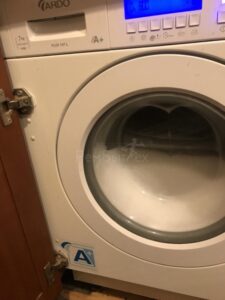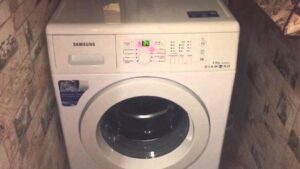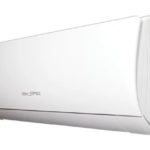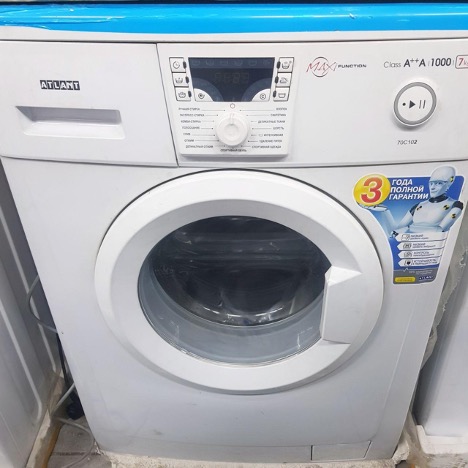How is a washing machine diagnosed? What is it, step-by-step algorithm of work
The washing machine is diagnosed independently using the codes on the display, as well as external signs (extraneous sounds, lack of rotation of the drum, lack of water drainage, etc.). In some cases, you can fix the problem yourself, but it also happens that you have to call a technician. The most common malfunctions and methods for identifying them are described in this material.
The content of the article
Water does not come out of the tank
Normally, water is gradually drained from the tank during washing. But sometimes it does not merge, which may be due to the following reasons:
- The filter located at the drain pump is clogged (the pump itself may also become clogged). As a rule, it is quite easy to remove it yourself, clean it and put it back.
- The drain pump may not be dirty, but broken due to normal wear and tear. This breakdown occurs more often than others and requires complete replacement of the part.
- The pipe installed between the pump and the tank may also become clogged. It also requires cleaning, and in rare cases, replacement.

If the water doesn't heat up
If the water does not heat up enough or does not heat up at all, diagnosing a breakdown of the washing machine comes down to checking the heating element. Even if the water is of sufficient quality, it gradually becomes clogged due to residual lint, powder particles and other impurities.
To definitely determine the malfunction, you need to set the program with maximum heating and see if the water is hot or cool. To do this, feel the glass of the hatch during the washing process. It should be much warmer compared to room temperature - then there is no breakdown.
You can also determine the malfunction of the heating element by the “behavior” of the washing machine. She begins to draw water and slowly rotates the drum, after which she waits for heating. But if the heating element is broken and the water remains cool, washing does not proceed.
Drum failure
One of the simple ways to check the serviceability of a washing machine is to monitor the drum. If it does not rotate, this clearly indicates a breakdown of one or more elements:
- First you need to check if the belt is intact. You can determine such a malfunction if you can hear the motor running, but the drum itself does not rotate. The belt does not necessarily break - it can simply slip off, then it is tightened. First remove the back cover and inspect the drive, replacing it if necessary.
- If the motor does not work at all, it means that the reason is not in the drum or the belt - it is the engine that has broken down, which is a serious breakdown. Another option is that the motor has not failed, but the electronics that control all processes have broken down. You will need to call a specialist.
- A less serious malfunction is associated with wear of the bearings - they are replaced with new ones. There may also be a foreign object between the drum and the tank that needs to be removed immediately.

Loud noise during operation
Extraneous sounds, hum and noise are another sign that helps you figure out how to diagnose a washing machine.There may be several reasons, and all of them require stopping operation until repairs are carried out:
- Knocking sounds and “hysterical” drum noise may be associated with the entry of a foreign object. Most often these are rigid frames in bras and other similar things. Locks can come off pockets and buttons can fly off clothes, so such cases occur quite often.
- If noise occurs while draining water, it means the drain pump is broken. It cannot be repaired - you will have to buy a new part and install it in place of the old one.
- Diagnosis of a washing machine malfunction is also carried out during its operation. If the drum rotates and an extraneous sound is heard, this indicates wear on the bearings. You can replace them yourself only if you have the skill. Otherwise, incorrect installation may result in new noise.
- If the machine is new or has recently been repaired, but the noise still appears, this is most likely due to an uneven floor. You need to move the unit in different directions to see how it stands. The optimal solution would be a new installation using a building level.

Thus, some faults can be diagnosed independently, but this does not mean that repairs can always be carried out at home. It is recommended to pay attention to the code that appears on the display, and then understand what kind of breakdown has occurred. If in doubt, it is better not to risk it and contact a service center. Inept actions can lead to even more serious violations.





